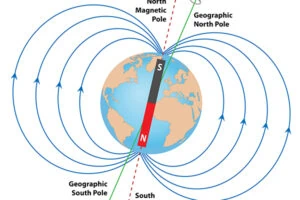Many companies that work with magnets in manufacturing use the term ‘gauss’ every day. Some may not know that the term originates in the work of a German mathematician named Carl Friedrich Gauss, who used mathematical principles to measure magnetism. Of course, you could probably get by without that particular trivia nugget. It’s more important to know what ‘gauss’ actually refers to and what it does not mean.
What does gauss mean?
Surprisingly it is still an often misunderstood term, even among companies that rely on magnetic components.
Essentially, gauss refers to the intensity of the magnetic field or, put another way, the amount of magnetic field in a given area.
One unit of gauss is one line of flux in a 1 cm square surface area. Another way to think of it is in terms of flux density. So, if you can imagine a sugar cube and one line of flux coming from the North Pole to the South Pole, that’s what one Gauss is. It doesn’t necessarily pertain to how far the magnetic field reaches, however the distance will be proportional to flux density and magnet geometry.
In more technical terms, gauss is still a measurement of field strength; it is a location variable and vector (with direction), which means a different location in a space has different gauss reading and direction associated with it.
Magnet pull strength vs gauss

What does gauss measure?
In measurement terms, gauss, abbreviated as G or Gs, is the cgs unit of measurement of a magnetic field B, also known as the “magnetic flux density” or the “magnetic induction”. One gauss is defined as one maxwell per square centimeter. The cgs system has been augmented by the SI system, which uses the tesla (T) as the unit for B. One Tesla = 10,000 gauss!

Magnetic field calculator
A calculation may help estimate field strength at a distance, but it wouldn’t take shielding/packaging into consideration. Working out the calculation by hand can be a long and difficult process. Fortunately, Adams offers a shortcut – a free Magnetic Field Calculator that measures both gauss level and pull force. Our calculations are based on the size and material type for an individual magnet.
Learn more
Questions? Contact us!
